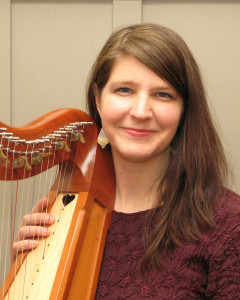I need a place for Mom – Now What?
The growing awareness that your senior parent is no longer able to live safely and independently alone without outside support is an emotional experience. The ensuing heaviness is compounded if you are one of the tens of millions of American adults, between the ages of...


 "My work as a therapeutic harpist is a service and not a performance. I don't expect any kind of recognition," multi-talented Seattle musician Monica Schley explained when she sat down to discuss her experience as a Certified Clinical Musician. Most of Schley's musical roles, such as her chamber-pop band, The Daphnes, or role in the experimental pop opera, "Now I'm Fine," involve performance and entertainment but through her service as a therapeutic musician, she says, she's found "soul purpose" and improved aspects of her musicianship. Schley began her journey with the harp at the age of 14. Since then she's gained mastery of her instrument and acquired a wide repertoire of music which will soon debut on her first full length album "
"My work as a therapeutic harpist is a service and not a performance. I don't expect any kind of recognition," multi-talented Seattle musician Monica Schley explained when she sat down to discuss her experience as a Certified Clinical Musician. Most of Schley's musical roles, such as her chamber-pop band, The Daphnes, or role in the experimental pop opera, "Now I'm Fine," involve performance and entertainment but through her service as a therapeutic musician, she says, she's found "soul purpose" and improved aspects of her musicianship. Schley began her journey with the harp at the age of 14. Since then she's gained mastery of her instrument and acquired a wide repertoire of music which will soon debut on her first full length album " Northaven Senior Living, located in the Northgate neighborhood across from the Post Office, is a friendly place. The all glass entrance to Northaven Independent Living opens into a modest and comfortable common space. Northaven Assisted Living is tucked safely behind the main building. It too opens into a comfortable common space where I found two ladies dozing and one anxious to engage me as I waited to talk with Assisted Living Director, Mary Quarterman, and Foundation Director, Bill Dorn. I enjoyed sitting in the safe, unpretentious and welcoming atmosphere. I never imagined it was on the front lines of Seattle's "quiet crisis."
Northaven Senior Living, located in the Northgate neighborhood across from the Post Office, is a friendly place. The all glass entrance to Northaven Independent Living opens into a modest and comfortable common space. Northaven Assisted Living is tucked safely behind the main building. It too opens into a comfortable common space where I found two ladies dozing and one anxious to engage me as I waited to talk with Assisted Living Director, Mary Quarterman, and Foundation Director, Bill Dorn. I enjoyed sitting in the safe, unpretentious and welcoming atmosphere. I never imagined it was on the front lines of Seattle's "quiet crisis." Liz Mulligan[/caption] Liz Mulligan first witnessed elder fraud while working with a client of With A Little Help. Since tracking down over $200,000 stolen by the client's bookkeeper she's gone on to establish a full time fraud fighting business:
Liz Mulligan[/caption] Liz Mulligan first witnessed elder fraud while working with a client of With A Little Help. Since tracking down over $200,000 stolen by the client's bookkeeper she's gone on to establish a full time fraud fighting business:  Gerry Cherney[/caption]
Gerry Cherney[/caption]